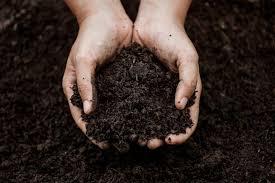Showing 251-260 of 361 publications
Updated: February 23, 2022
Keeping Horses on a Budget
Horses are expensive to care for, and the costs can quickly become burdensome unless they are managed carefully. It is possible, however, to reduce horse care costs while providing a high standard of care. Before you can cut expenses, you must have a good understanding of your horse-related expenses. Once you have a thorough understanding of your expenses, you can begin to consider ideas for reducing them using the tips on feeding, boarding, farrier and veterinary care and supplies detailed in this publication.
Updated: April 7, 2021
Equine Disposal Guide for Maryland Horse Owners (EB-421)
Have you ever lost a horse or made the difficult decision to euthanize a horse? Then what do you do? Properly handling a large animal after it has passed away can be difficult. Publication EB-421 from the University of MD Extension helps guide horse owners in each MD county in the disposal options available.
Updated: April 28, 2022
Manure as a Natural Resource: Alternative Management Opportunities (EB-420)
A new publication (EB-420) is available from University of Maryland Extension. Manure as a Natural Resource: Alternative Management Opportunities is written as an overview of some existing technologies. Many new ideas are proposed for the region, and understanding the science behind them is imperative to deciding which option you may want to follow.
Manure, as a source of organic matter and plant nutrients, is an excellent conditioner for soils. It is a component of agronomic production, cycling nutrients between soils, plants and livestock. However, in areas where limited land is available for application, excess soil nutrients can lead to water quality issues. Local restrictions on manure application necessitate finding alternative uses. The simplest method is to transport manure to nutrient-deficient land. Manure can be composted into a higher-quality fertilizer or have the nutrients extracted and sold separately. Manure also has an energy value, and where feasible, anaerobic digestion, pyrolysis, or gasification could be options.

Updated: April 19, 2022
Understanding Agricultural Liability: Livestock and Other Animals (FS-990)
This publication discusses potential liability for livestock and other animals you may have on the farm. Typical theories for liability would include strict liability and negligence. This publication walks you through previous Maryland court cases involving livestock and when each form of liability was found. Finally, the publication offers suggestions on how to handle potential legal risks from livestock, for example utilizing liability waivers, purchasing the right level of general liability insurance, etc. Author: Paul Goeringer; Title: Understanding Agricultural Liability: Livestock and Other Farm Animals Livestock (FS-990)
Updated: January 6, 2021
Biomass Production Study of Hybrid Poplar Grown on Deep trenched Municipal Biosolids
Hybrid poplar trees 2-6 years old were grown on a gravel mine spoil in southern Maryland that had biosolids applied using deer row application. The trees were harvested and processed to determine their biomass on a dry weight basis. The data was analyzed and regression analysis was used to create equations that could predict biomass from tree diameter at breast height. The equations developed would allow less intensive data collection and growth assessment of other stands of poplars.
Updated: July 23, 2024
Anaerobic Digestion: Basic Processes for Biogas (FS-994)
Anaerobic digestion is a process where anaerobic bacteria break down organic material to produce biogas. This process occurs naturally in various environments and can be used in anaerobic digesters to treat and dispose of waste, generate biogas, and destroy pathogens. The biogas produced consists mainly of methane and carbon dioxide, with trace levels of other gases. Authors: Gary Felton, Stephanie Lansing, Andrew Moss, and Katherine Klavon; Title: Anaerobic Digestion: Basic Processes for Biogas (FS-994).
Updated: April 7, 2022
Understanding Agricultural Liability: Maryland Fencing Law (EB-419)
The publication provides a general overview of previous court decisions related to fencing in agriculture and examples of county ordinances that impact fencing duties. For example, counties potentially have ordinances that impact the maintenance and construction of fences, specify how costs should be split between neighboring landowners, and liens to force non-paying landowners to pay their share of the costs. Author: Paul Goeringer, Title: Understanding Agricultural Liability: Maryland Fencing Law (EB-419)
Updated: January 19, 2021
Emerald Ash Borer and the Private Woodland Owner
Emerald Ash Borer (Agrilus planipennis) is an exotic pest native to Asia. Experts believe it arrived in the United States in solid wood packaging materials. The Emerald Ash Borer (EAB) was first identified in Michigan in 2002 and was found the same year in nursery stock in Charles County, Maryland. Despite implementation of eradication programs around the source nursery and quarantines on the movement of timber and firewood, EAB has spread to nearly all counties west of the Chesapeake Bay.
Updated: January 8, 2021
Developing a Grain Marketing Plan is Critical for Success
A well-thought-out marketing plan will enable you to manage the unpredictability of grain prices and their associated risks. A plan promotes the use of logical, orderly marketing techniques. This fact sheet describes the five steps you can take to increase the likelihood of making successful marketing decisions.
Updated: July 13, 2022
Trend-Adjusted Yield Option Introduced for Crop Insurance (FS-970)
Actual Production History (APH) is a 4- to 10-year yield average used to calculate each producer’s production guarantee. Producers with 10 years of yield history are penalized under APH because yields have increased over time, and APH yields can lag behind their most recent yields. Therefore producers with only 4 years of yield history can actually have higher average yields. Authors: Paul Goeringer and Lori Lynch; Title: Trend-Adjusted Yield Option Introduced for Crop Insurance (FS-970)